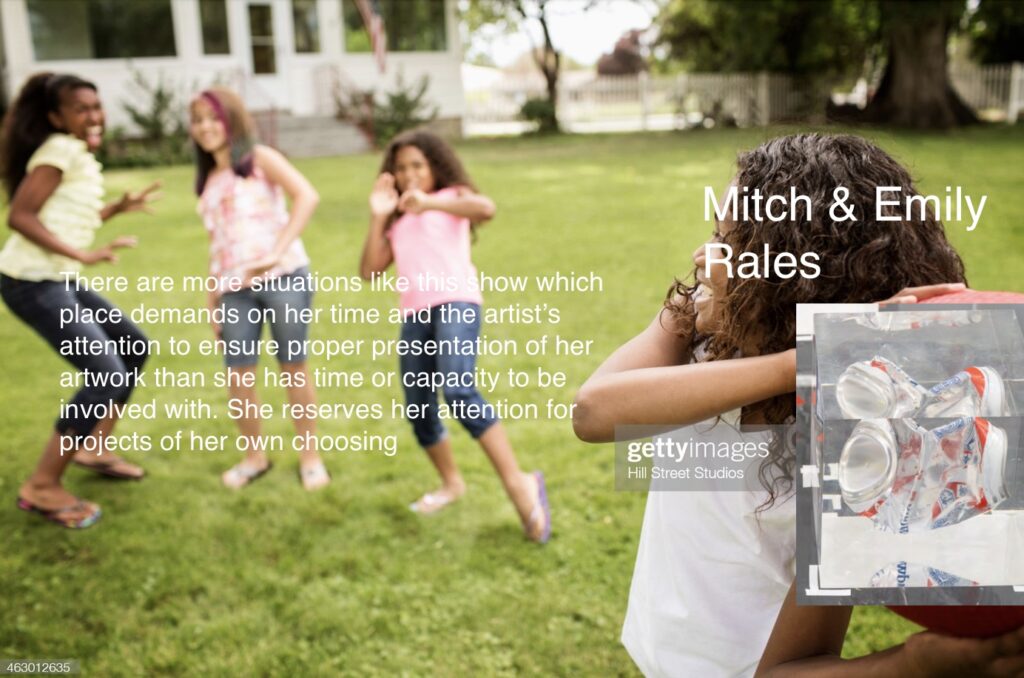
There has been surprisingly little written about Cady Noland’s show at Gagosian’s Park & 75th Street storefront space. I’m not gonna lie, I don’t know quite what to make of it all, either. All the years of absence and anticipation just end, and people maybe don’t quite know what to do or say. In the last 20 years, Noland’s practice has been understood as a harbinger, coming from the past, with relevance for the present. In the 80s and 90s she threw the dodgeball of prophecy about American violence and celebrity politics and art world commodification at our heads, and every disclaimer, auction record, and lawsuit of this century was another hit.
As Noland’s first show of new work, and a lot of it, in decades, it’s easy to want it to be important. But now that means figuring out what it’s doing now; is it relevant in this moment, or is it yet another harbinger?
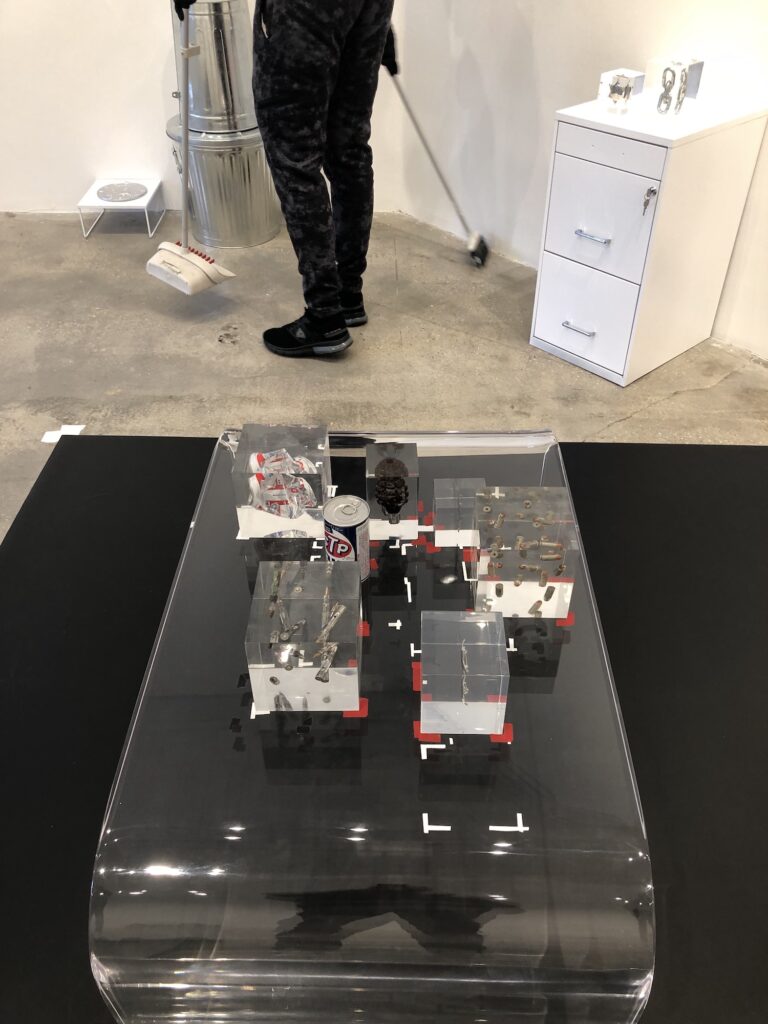
I spent a fair amount of time in the show on its last morning, trying to see the work and how it came together, studying the acrylic trays of archival Polaroids on the window ledge, and also wanting to see how the maintenance played out.
The continuity with the past is not only established by the presence of a work from 1986 and the unlisted Polaroids, which document various older works and the varying states of previous exhibitions. The Budweiser and oil cans in the new works are also vintage. The dominant material in the show, plastic, is the material of the future of the past. Noland has included objects embedded in acrylic blocks before, but they’re everywhere here, with crushed Coke cans and bullets and police paraphernalia preserved forever in the most irreversible and useless way. Which, for the hand grenades, at least, is probably a net good.
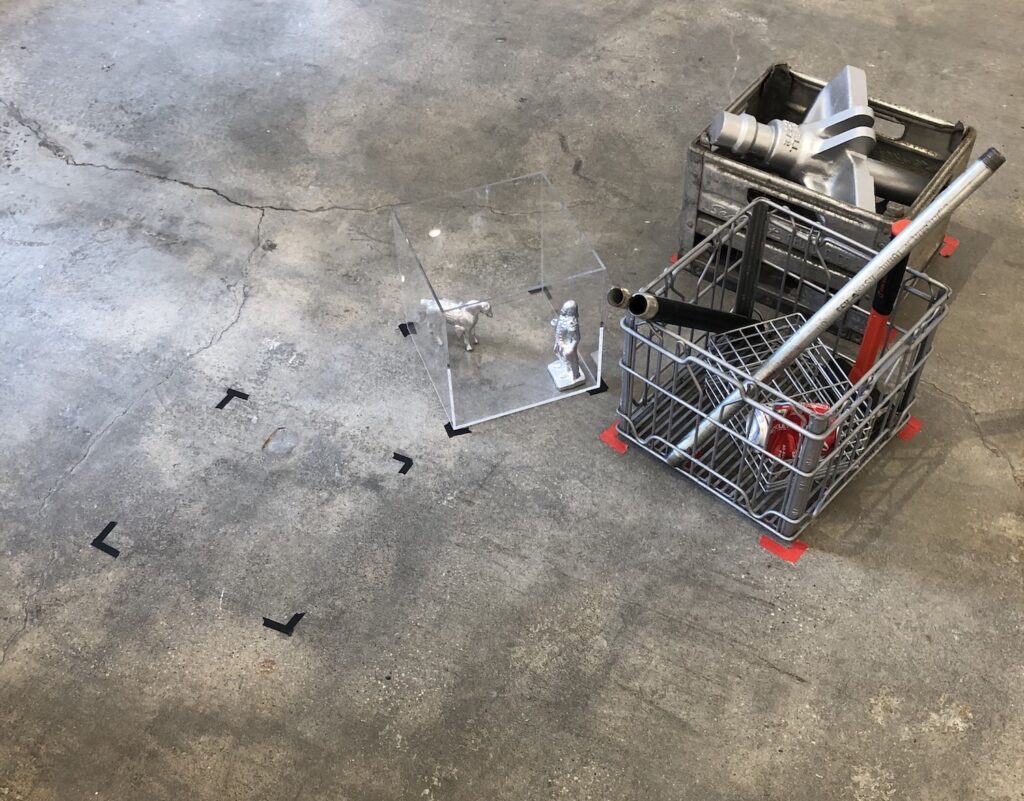
But there are also tables of bent slabs of acrylic, thick and thin, and many assemblages have a sheet of black or red vinyl underneath them, like a carpet. [But not like an Andre; one visitor got cranky when the guard told her not to walk on the sculptures.] There were plastic boxes full of stuff, and covering stuff, where there’d only been crates. [Though there were lots of crates, too, obv.]

I wonder about the tape, which was not specified as an element, but which was visible on or around almost every work. No one has mentioned it. But again, no one has mentioned any of the specific content of the work, just vibes. It’s not like the works are rebuses waiting to be decoded.
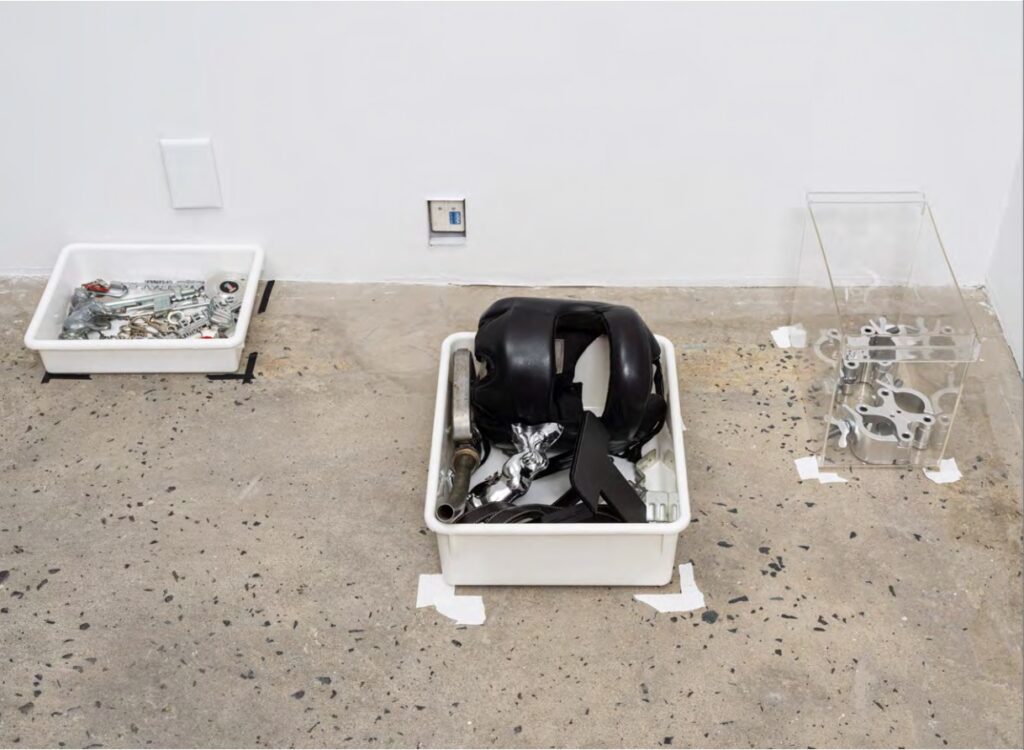
Given Noland’s history of precision, or deliberateness, about how her work is shown, the tape feels relevant to the show. It denotes where elements go, except when it doesn’t. And elements go there, except when they don’t. There are three colors of tape, in various widths. Some marks and forms—outlines?— are empty, some partially obscured.
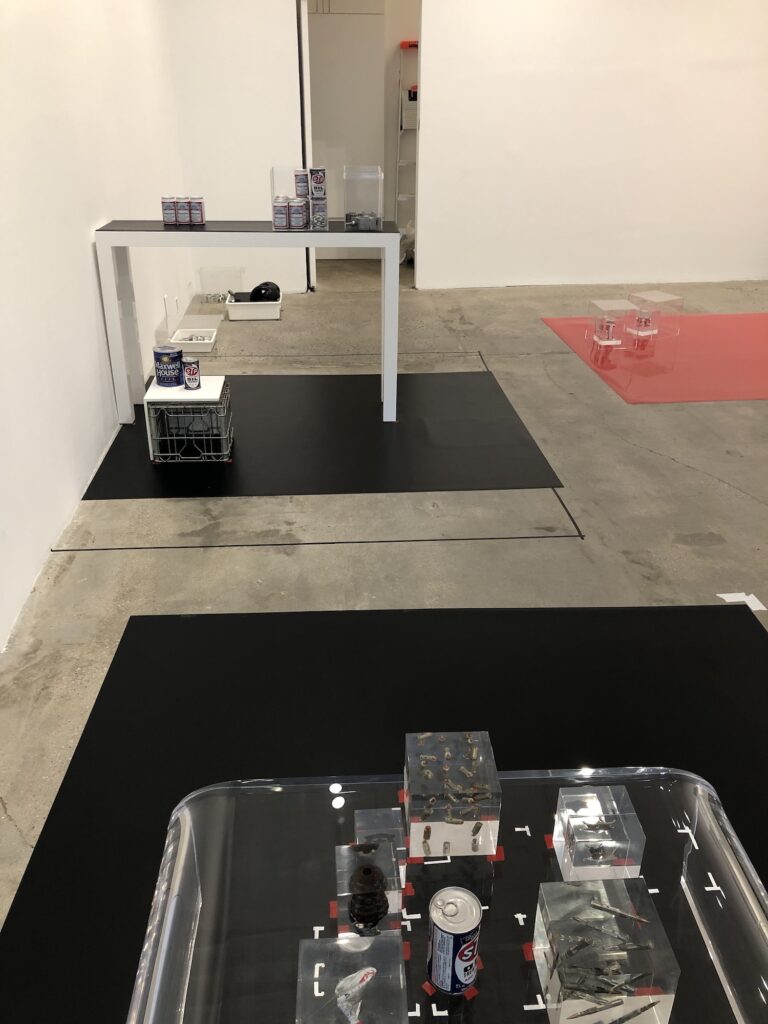
In the space, the tape feels like it traces the artist’s own process of making the show, and of composing the work. There was talk of Noland changing the entire show completely the day before the opening, and maybe before that, too. If the tape doesn’t exactly reflect these past, lost/apocryphal states [are there Polaroids?], it at least attests to the show’s process and flux. In the space it reminded me most of spike marks on a stage floor, color-coded tape marks for placing props and scenery. Is Noland calling attention to the performative nature of this exhibition, and all that come before and after? Is all the art world a stage, and we are merely players?
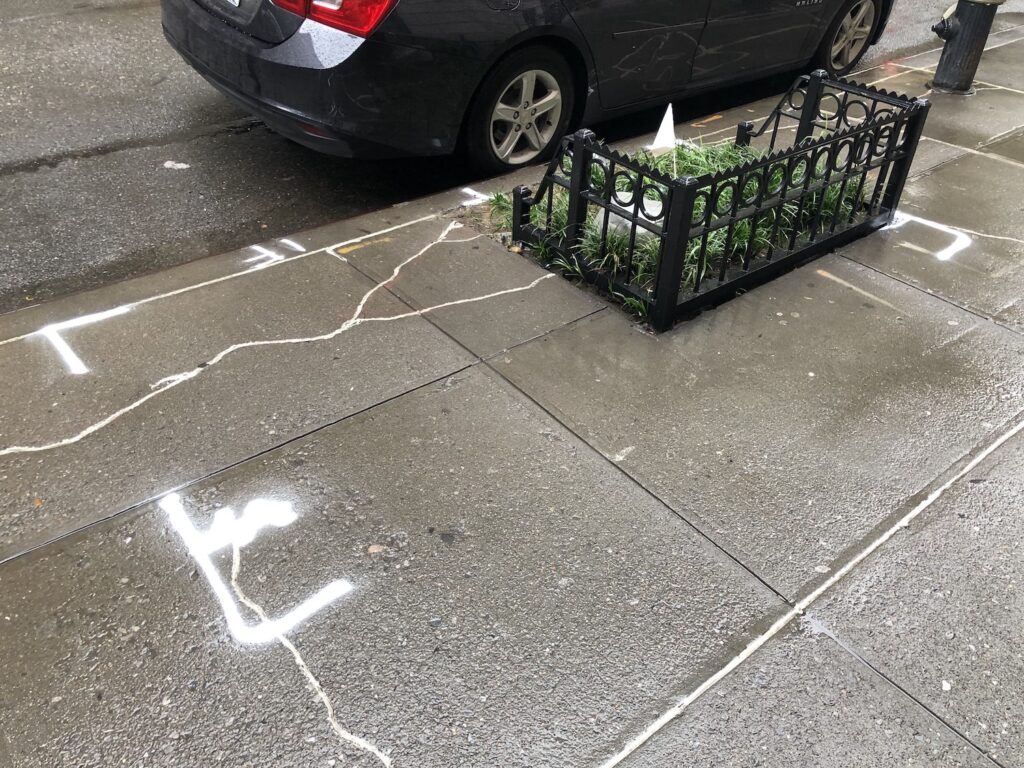
Before I got fifty feet from the gallery, I saw these marks spray painted on the sidewalk. Though these turn out to be the dimensions of future street tree boxes, they instantly reminded me of the painted lines that trace underground utility lines, marks to reveal what’s extant but unseen, marks to guide what’s to come.
Another piece of gossip I’d heard was that, though an individual pricelist had been compiled around the opening, the Raleses were buying the entire show for Glenstone. I left trying to reconcile the two rumors, trying to imagine how a show in flux of works in flux would be acquired in toto, to be immaculately preserved in its current state forever, with natural lighting, and surrounded by native plantings. If this is the case, then Noland has indeed managed to make work that speaks directly to the present, while offering a sober warning for the future. A future where an artist’s best hope for immortality is being cast in acrylic for a benevolent billionaire’s suburban museum complex.
